
Noppei Udon Momijiya is a noodle shop in Nagahama City, Shiga Prefecture, that boasts a history of over 100 years. The third-generation owner, Tsujiki Hachiro, holds the secret to the shop's key recipe, Noppei Udon.
This thick, popular, specialty soup is also, to say the least, the dish representative of Shiga Prefecture in the winter. Today, we head to the shop to find out just what makes it so popular.
A Shop Interior Reminiscent of a Showa Era Castle Town
Noppei Udon Momijiya is only 5 minutes on foot from JR Nagahama Station, and nearby to the Kurokabe Glass Shop in the center of Kurokabe Square. It sits quietly in a corner of the old arcade street of Otemon-dori.
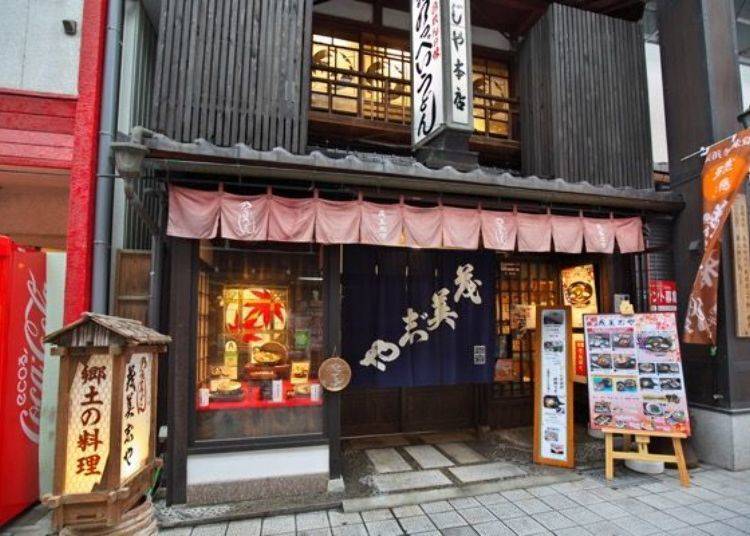
Before proceeding through the noren (shopfront curtains), you will see some handiwork decorated with foliage in the shop windows, just as the name of the shop itself, “Momijiya,” suggests. (Momiji = foliage). It is said that the shop was opened up as a cafeteria in 1912 by the grandmother of the current shop owner.
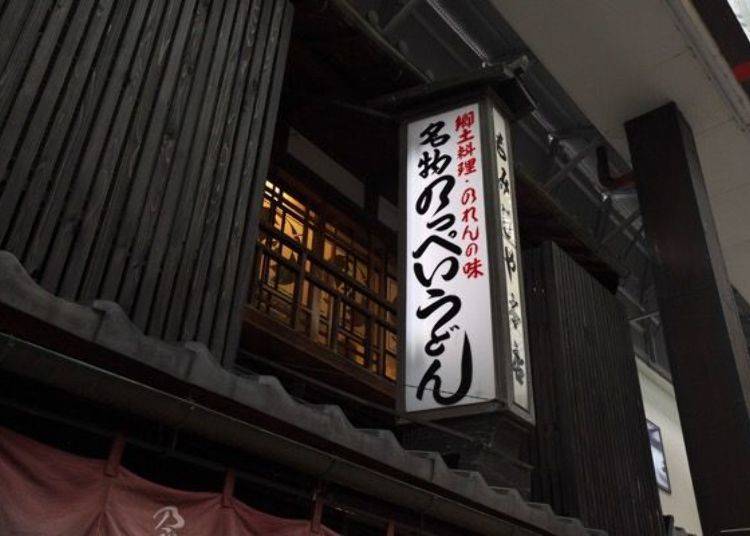
Inside the shop is an L-shaped chair against a wall that is decorated with paper chopstick wrappers pushed into the little frames. On those wrappers are messages written by previous visitors to the shop.
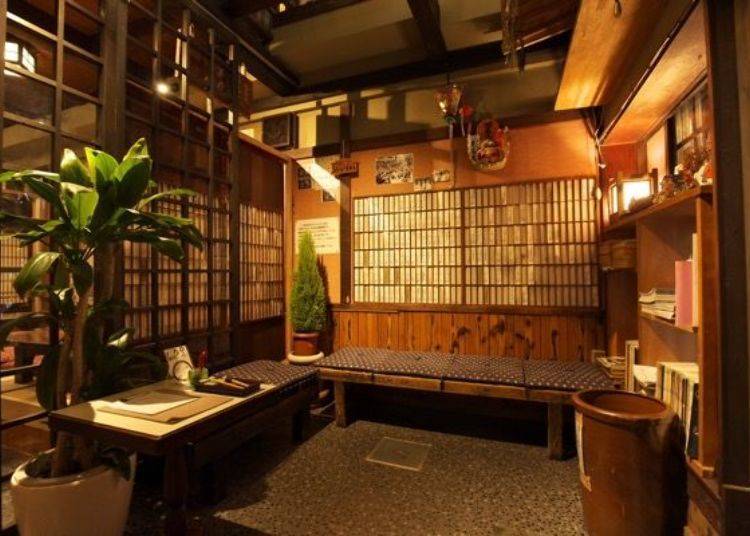
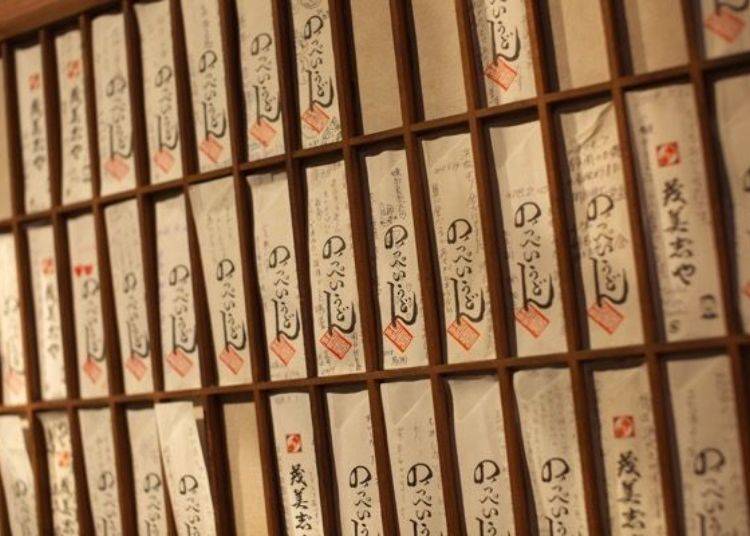
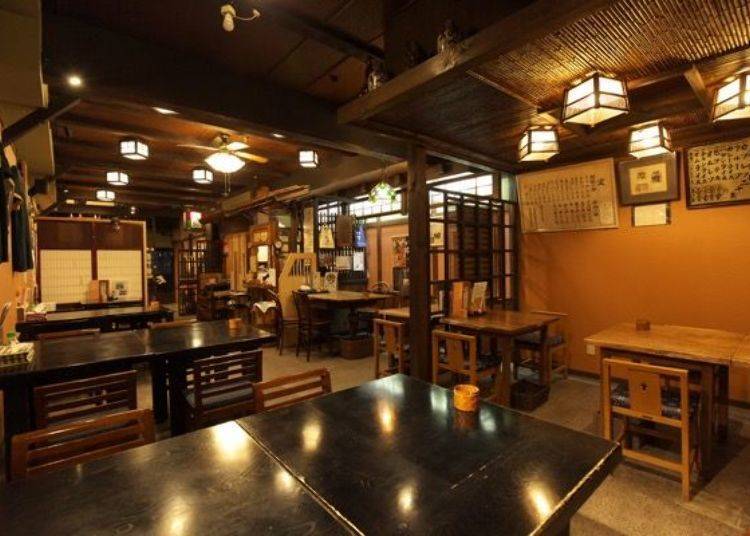

Towards the back of the first floor, you can see the original menu from when the shop was still a cafeteria hanging from the wall near the table seats. It is a valuable item now, written by hand on a thin glass, and is said to have been discovered in 1940, wrapped carefully in straw.
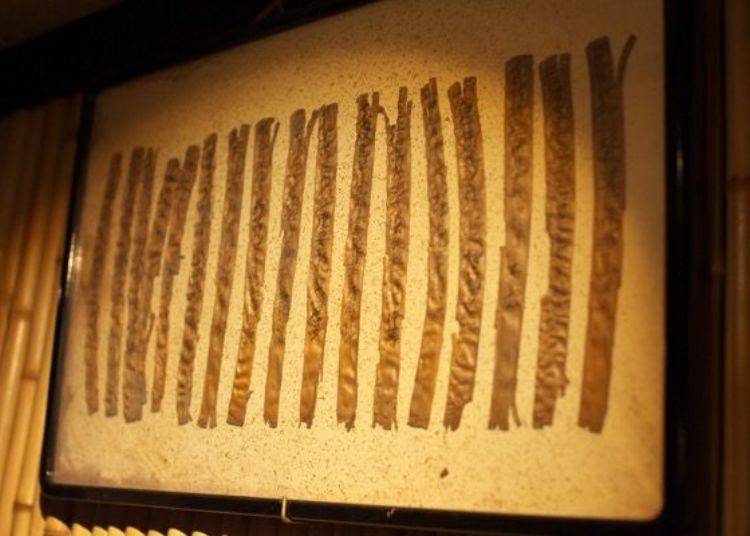
There is also a valuable wooden board with written text called a “kyoumon” on display in the shop. The text appears to be from the Lotus Sutra, discovered underground in 1970. The one decorating the shop is only one of many, most of which have been donated to nearby muse
Along with these, there are also pre-war tanuki Shigarayaki wares, and the indigo-dyed Happi coat actually worn by the second-generation shopkeeper. As you can see, as such a long-standing shop it is not only a place to be enjoyed for the food, but also as a museum.
Now, On to the Specialty Noppei Udon Noodles!
One of the things we can’t neglect to mention about Noppei Udon noodles is the unique, carefully-selected ingredients used for the soup stock.
This shop uses a mix of 5 different varieties of “bushi,” or fish flakes, such as katsuo (skipjack tuna), with rishiri-kombu, a type of kelp. The soup, cooked in a pot at the back of the kitchen, is a beautiful amber color, giving it a rather elegant appearance.
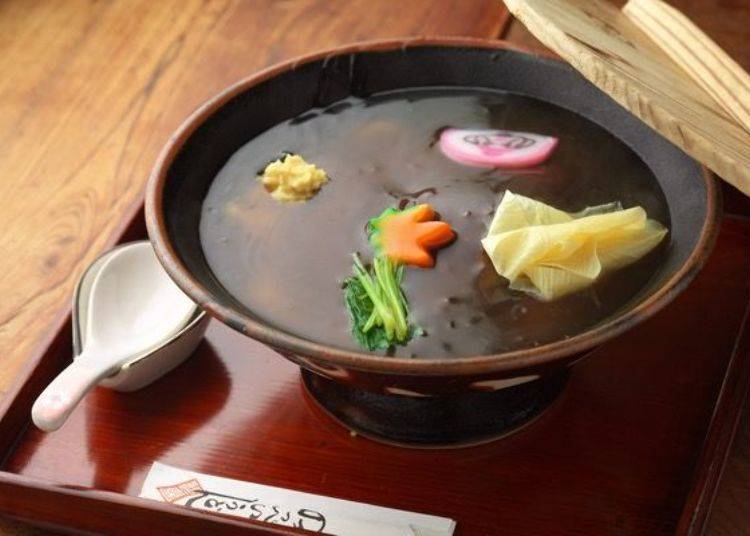
At last, here is the Nagahama Specialty, Momijiya’s Noppei Udon noodles (1100 yen, tax included). The appearance of the soup along with the thick aroma hits you as soon as you take off the lid. Yuba is also served with the udon, and if you look closely you will also see... a giant shiitake mushroom!
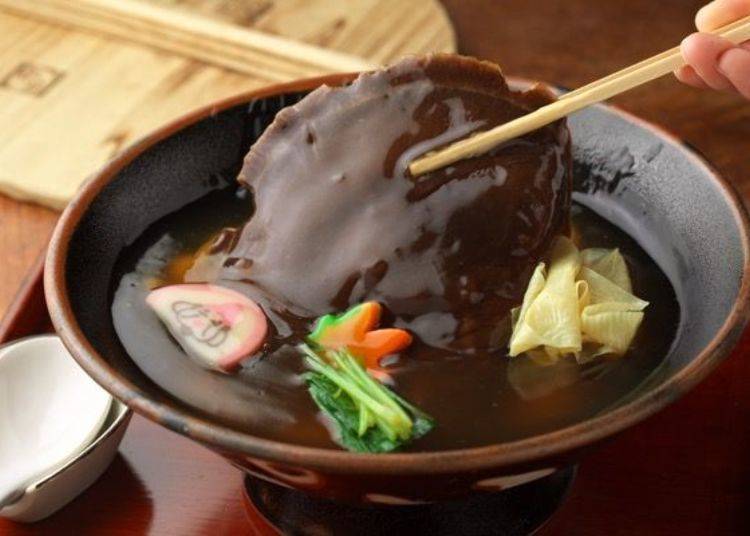
The shiitake seems almost too big for the bowl! Coupled with the soup broth, you really get a sense of the thickness of the soup. Also, it is this very shiitake mushroom that makes the taste and the aroma of the soup all the more rich.
Along with the Momijiya Noppei Udon, we also ordered the Omi Beef Noppei Udon (1300 yen, tax included), made using Shiga’s best Omi beef.

The bowl used for the Omi Beef Noppei Udon is an Arita ware. The aroma of the soup is unbearably delicious...so unbearable, that we have no choice but to stop what we are doing and eat, if for no reason other than to quiet the growling of our stomachs!
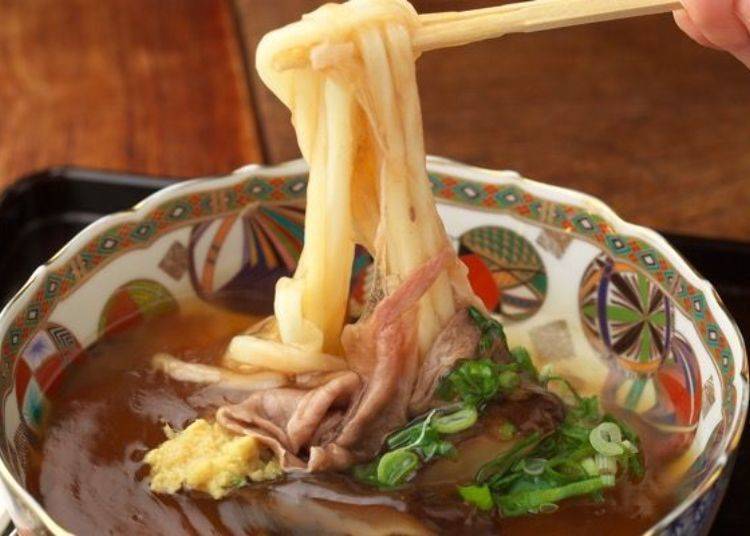
The soup is thick and hot, so it is hard to eat the entire first bite in one slurp! We enjoy it little by little, blowing on the udon noodles as we go along. They are soft and carry the aroma of wheat, which after a while, also picks up the aroma of the seafood broth and bonito flakes.
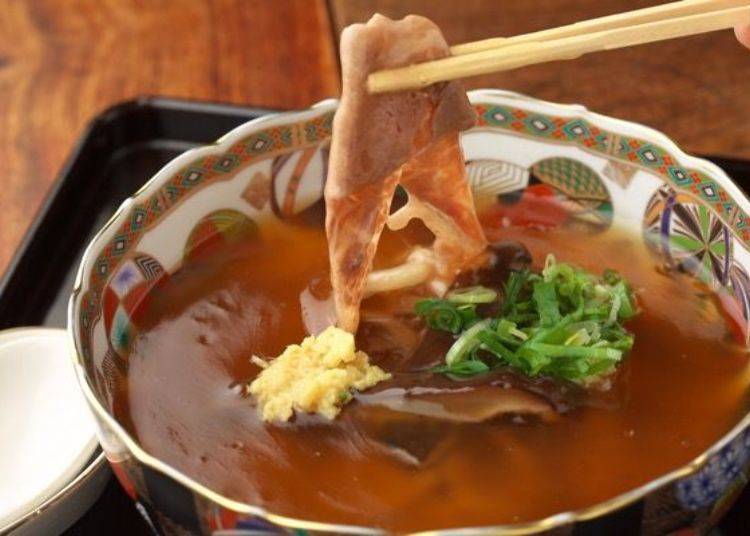
The beautifully marbled shabu-shabu Omi beef looks almost too delicious to eat. Though it is hard to see though the thick broth, there is about five times the amount of beef as that shown! The Omi beef was super soft, yet the fatty sweetness of the meat still doesn’t beat the soup as a whole.
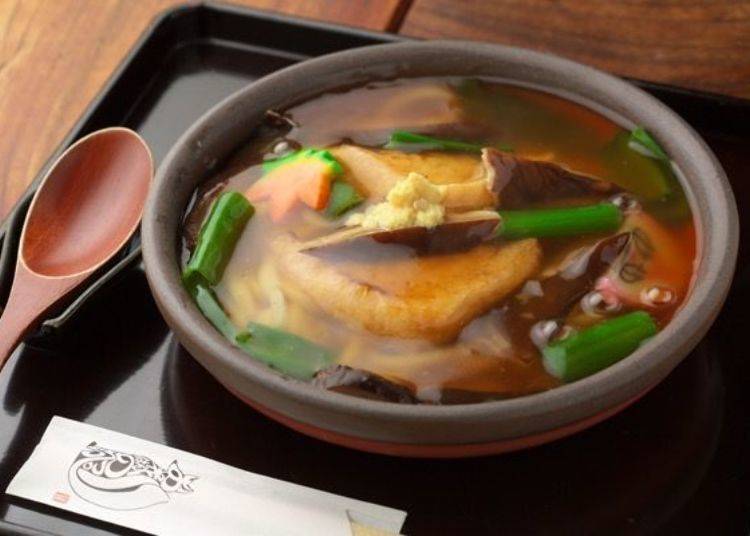
And you can’t forget about the other popular menu item, Ohana Kitsune Noppei Udon (1000 yen, tax included)! It is fragrant and warm, with slightly burnt fried tofu, and accented with onion, making for another dish too delicious for words.
Unlike the Omi Beef Noppei Udon noodles, which uses the same broth, the Ohana Kitsune Noppei Udon also includes the delicious flavor and texture of vegetables, which go well with the taste and fragrance of the fried tofu slices.
Lastly, I also tried “Red Konnyaku Dengaku,” an arranged dish of a local Shiga food, Nagahama Dengaku (450 yen, tax included).
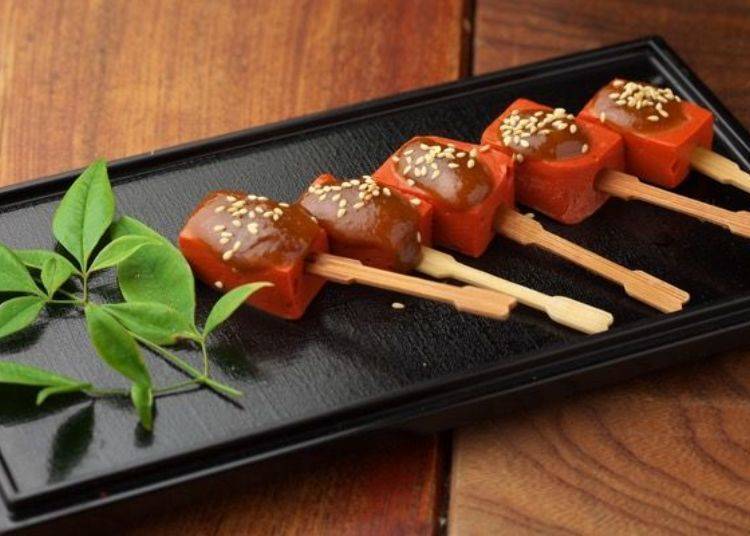
There is also a number of other affordable menu options, including various rice bowls, sushi, and Noppei Udon set menus.
A Commitment to Noppei Udon Noodles
Throughout the changing times, Momijiya has remained popular with its customers. Third-generation shop owner Mr. Hachiro is a local Nagahama native with a love for his hometown and a smile to match. When it comes to his udon, his commitment is undeniable.
Once a cafeteria, Momijiya was remodeled into a local restaurant by its second-generation owner with the establishment of Kurokabe Square in 1988, in which Noppei Udon was officially added to the shop’s signboard menu. This was when shop owner Mr. Hachiro realized, Noppei Udon is indeed a specialty of Nagahama. Since then, it has kept its same flavor for over 30 years.
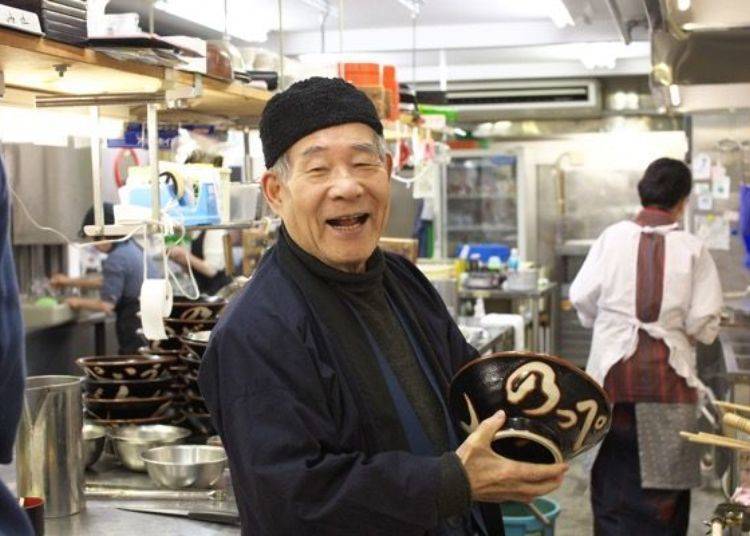
Mr. Hachiro is especially particular about the quality of the noodles served in his shop! Every afternoon, he has skilled udon craftsmen prepare the noodles in the back. They are left overnight, and only those noodles from which the smell of the powder has disappeared are used the next day. Of course, no additives are used at all, either.
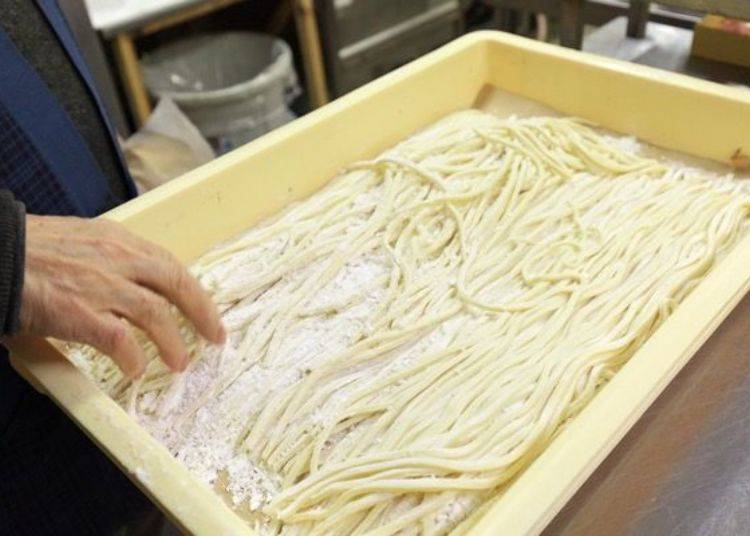
There are two pots for slowly simmering water at Momijiya. The owner’s technique is to cook the noodles as the water is boiling, making sure not to lower the water temperature as the noodles are simmering.
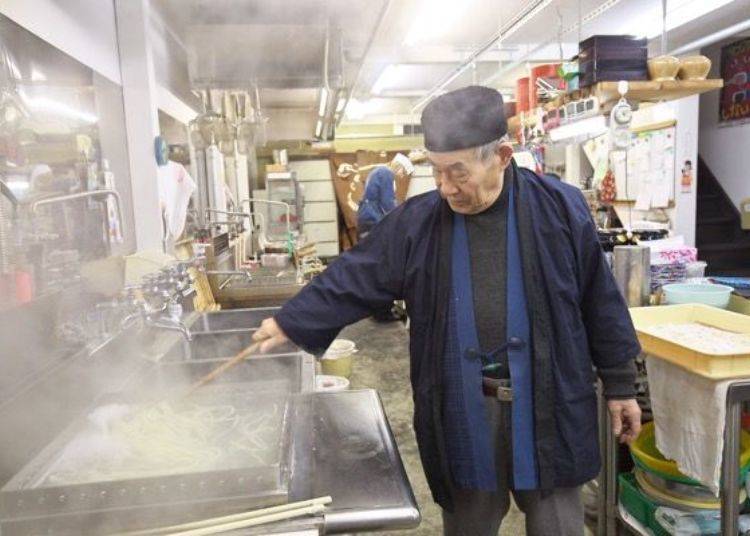
If the noodles start to move along with the boiling of the water, reduce the fire. It takes about 12-13 minutes in total to simmer. “Udon is a living thing,” states Mr. Hachiro. The noodles change in texture, flavor, and taste as time goes by, but that’s just one of the charms of udon. For Noppei Udon, the best noodles are those that are a little on the softer side.
As for the udon broth, it is the thickness that brings it to life! The one who comes to finish up the complex, fragrant and flavorful broth for the soup is none other than Mr. Hachiro’s wife, who has accompanied him here for many years.
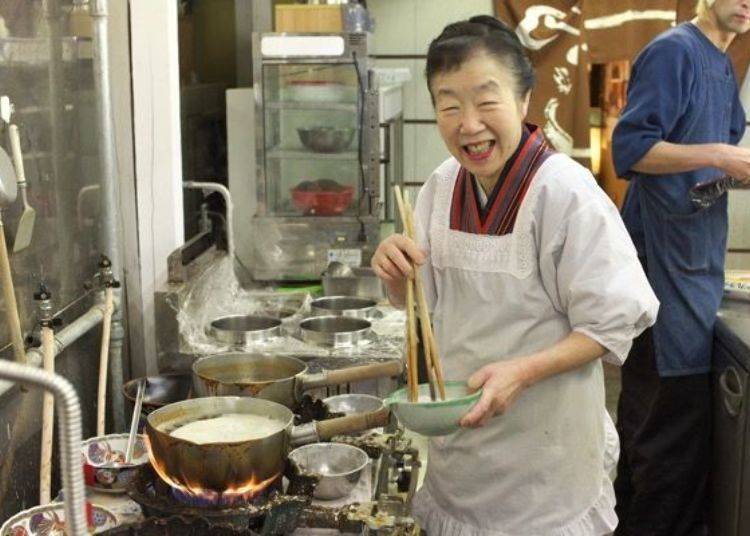
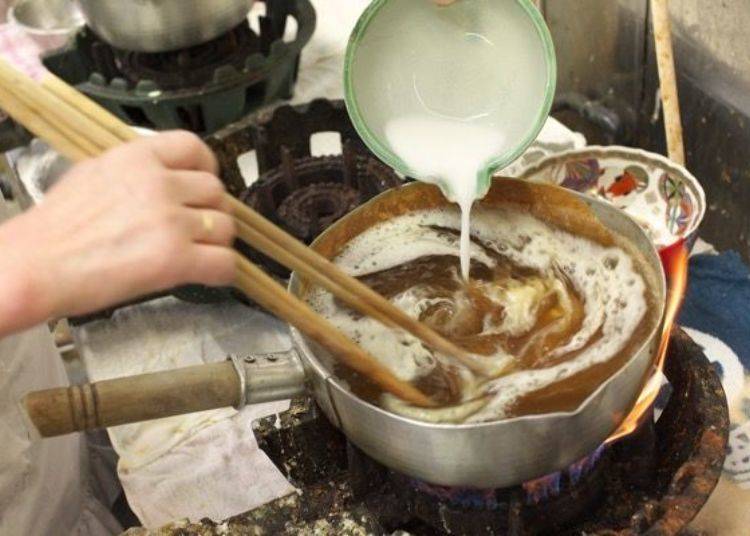
Using thick chopsticks, she stirs in potato starch several times. As she gradually stirs the soup, the kitchen fills with the delicious aroma of seafood and broth.

And here we have it! Soft udon noodles in a hot, thick broth. Just one bowl of udon is overflowing with the taste of the same passion and commitment put into every dish.
The Couple’s Real Secret Behind the Deliciousness of Momijiya’s Udon!?
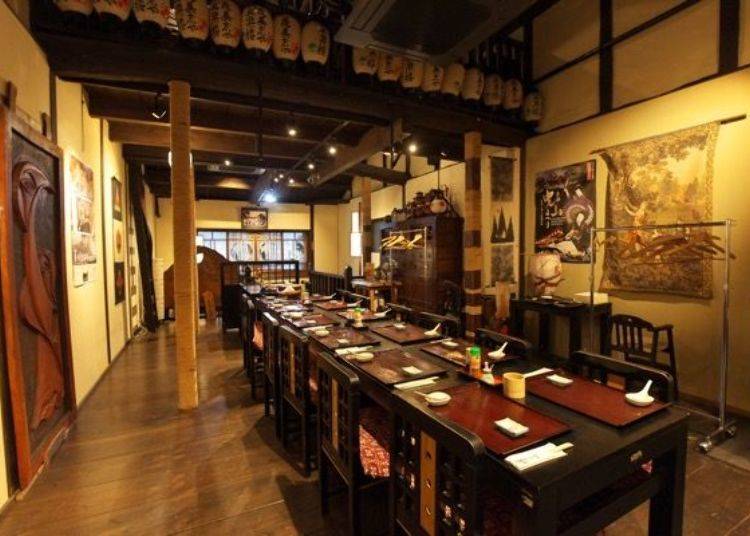
In the past, the shop was both a residence and a restaurant. It is said the shopkeepers lived here with their children on the second floor until it was renovated in 2017.

The window facing the shopping district displays an emblem of two autumn leaves. When Mr. Hachiro became the owner of the shop, he had this crest designed as a special order by a craftsman. The leaves are designed so that the tip of each one meet, resembling two hands holding. It is said to represent Mr. Hachiro and his wife.
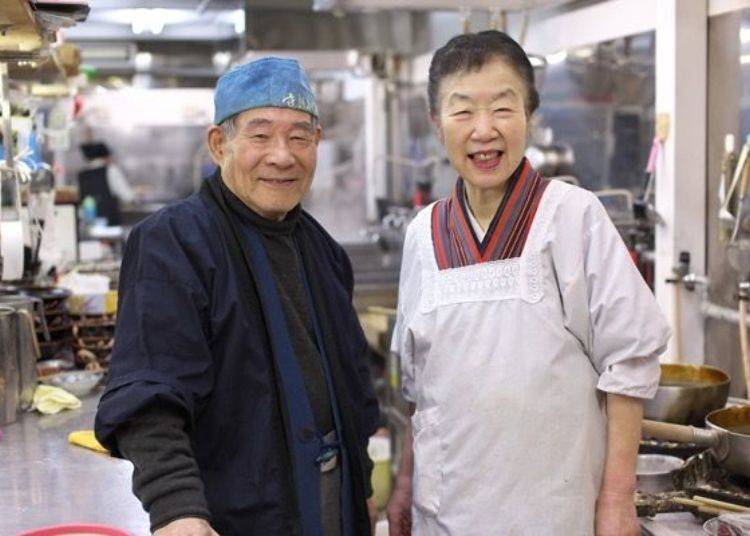
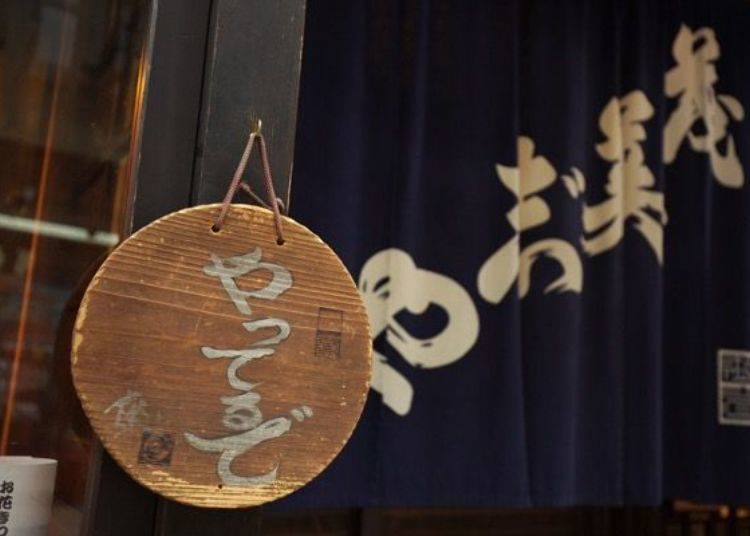
The udon and the broth, as well as the Nagahama shop owner and his family, create not just a delicious Noppei Udon, but the gentle taste of nostalgia. The hot soup and noodles of their udon will also warm your body and soul, allowing you to relax and enjoy as if you had come back to your own hometown.
-
Noppei Udon Momijiyaのっぺいうどん 茂美志や
- Address 7-15 Motohamacho, Nagahama, Shiga
- Phone Number 0749-62-0232
Hours of Operation: 10:30AM~6:00PM
(Entry by reservation only after 6PM; closes 9PM)
Regular Holidays: Tuesdays
- Area
- Category
*Prices and options mentioned are subject to change.
*Unless stated otherwise, all prices include tax.
Popular Tours & Activitiess
Recommended places for you
-

Kambei Sannomiyahonten
Yakiniku
Kobe, Sannomiya, Kitano
-

ISHIDAYA Hanare
Yakiniku
Kobe, Sannomiya, Kitano
-
Goods

Yoshida Gennojo-Roho Kyoto Buddhist Altars
Gift Shops
Nijo Castle, Kyoto Imperial Palace
-

Jukuseiniku-to Namamottsuarera Nikubaru Italian Nikutaria Sannomiya
Izakaya
Kobe, Sannomiya, Kitano
-

Kanzenkoshitsuyakinikutabehodai Gyugyu Paradise Sannomiya
Yakiniku
Kobe, Sannomiya, Kitano
-

Osaka Aquarium KAIYUKAN
Zoos, Aquariums & Botanical Gardens
USJ, Nanko Port
-
Ad

Café Bahnhof in Osaka: The home-roasted coffee that captivated G20 leaders!
-

Everything You Need to Know About teamLab Biovortex Kyoto (2025 Insider Guide)
by: Wemmy Chau
-
Ad

Experiencing Manga as Culture, Not Just Reading It: Expo 2025 with Rumiko Takahashi
-

Kyoto's Hidden Treasures Open This Winter! Enjoy Exclusive Access to 15 Rare Cultural Sites (Jan-Mar 2026)
by: Guest Contributor
-
Ad

Recharge and Relax with a Healing Getaway at Kamenoi Hotel Toba
-

Best Things to Do and See Around Kyoto & Osaka in September: Events and Festivals in Kansai
Inspiration for Accommodations
-

Spacious Family Hotel in Namba: 20 Comfortable Stays for Family Fun
-

Charming Hotels to Enjoy the Spectacular Views of Arashiyama's Autumn Leaves from Your Room
-

Experience Stunning Views of Osaka Castle from Private Spaces: Top Hotels Near Osaka Castle
-

Recommended by Visitors! Arashiyama's Best-Rated Hotels
-

Family-Friendly Universal Studios Japan Hotel with Excellent Access
-

Enjoy a Comfortable Stay in Osaka! 10 Hotels with Convenient Airport Shuttle Services
-

Top 10 Recommended Hotels Near Namba Station with Great Access
-

Enjoy Night Views from Your Room! Recommended Hotels in Namba Area
-

Inside Kyoto's Spectacular Sanjusangen-do Temple with 1,000 Gold Statues
-

Ginger Pork (Shogayaki) Recipe: A Quick & Easy Japanese Classic
-

Japanese Restaurants and Foreigner-Friendly Services: What Is Needed and Further Thoughts
-

‘Chewy Hormone?!’ 10 Times Tourists Were Shocked by Japanese Food
-

10 Budget Restaurants For Lunch in Gion: Take in the Kyoto Vibes On the Cheap!
-

Kichijoji – Explore Tokyo’s Top-Rated Stylish Suburb in Half a Day!
- #best gourmet Osaka
- #things to do Osaka
- #what to do in kyoto
- #what to bring to japan
- #best gourmet Kyoto
- #new years in Osaka
- #what to buy in nanba
- #Visiting Osaka
- #onsen tattoo friendly arima
- #daiso
- #Visiting Kyoto
- #best japanese soft drinks
- #japanese fashion culture
- #japanese convenience store snacks
- #japanese nail trends













